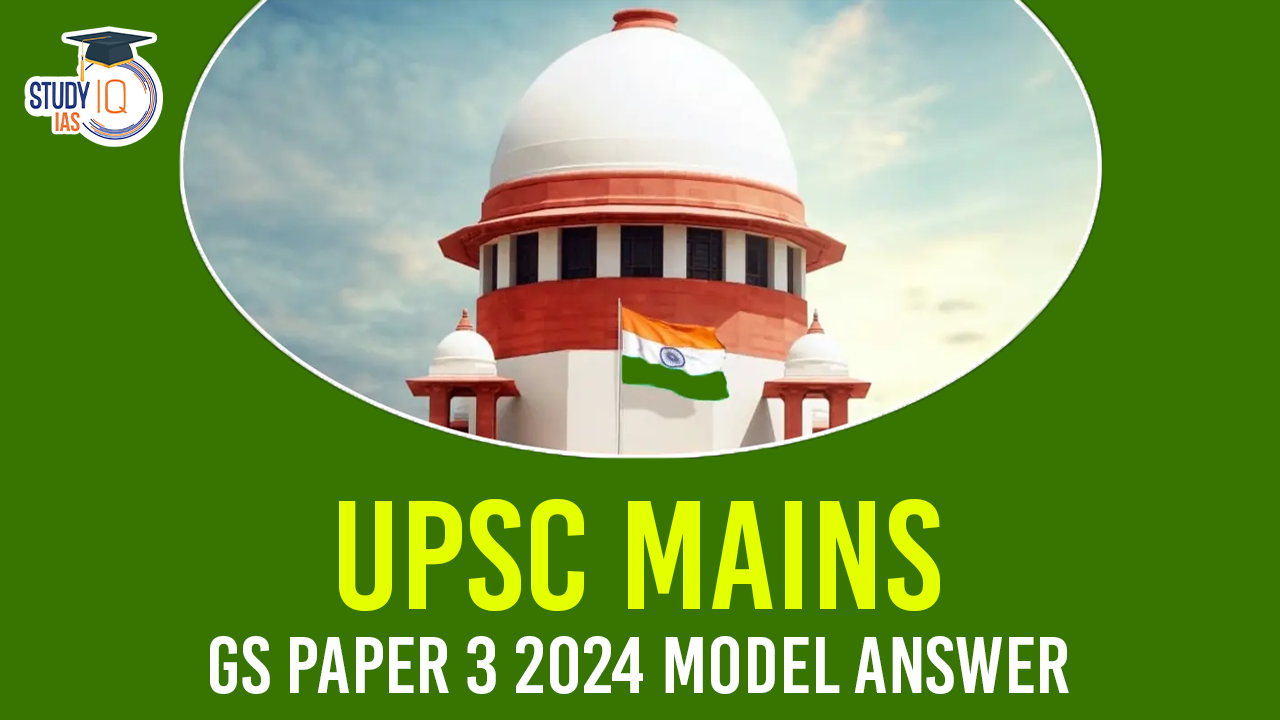Table of Contents
Introduction
- You can mention that with changing climate pattern, there has been an increasing trend of urban floods in India over the past several years.
- Add examples-Delhi Flood (2023), Bengaluru Flood (2022), Hyderabad (2020), Chennai (2015).
Causes of Urban Flooding
Urban flooding is caused by heavy rainfall overwhelming drainage capacity. The major contributing factors include:

Two Major Urban Floods in India
| Flood event | Immediate cause | Contributing anthropogenic factors | Impact |
| Chennai Floods (2015) | Heavy rainfall caused by a strong El Niño event | Decreased natural areas, loss of water bodies, encroachment of river and streams and other drainage channels, and uncontrolled multiplication of built-up areas | Over 500 people died, and around 1.8 million people were displaced. |
| Delhi Floods (2023) | Yamuna River breached its banks, reaching its highest water level in 45 years (over 208.6 metres) due to excessive rainfall (260 mm of rain in just 24 hours). | Rapid urbanization and encroachments on floodplains, especially near the Yamuna, poor drainage infrastructure, deforestation and loss of green cover, improper solid waste management | Several low-lying areas along the Yamuna were submerged. Also roads, homes, schools, and government buildings were flooded. |
Policies and frameworks in India to tackle Urban floods
- National Flood Management Programme→ structural and non-structural methods had been adopted depending on the nature of the problem, geographical conditions, and available resources.
- NDMA Guidelines (2010) and Preparedness Mechanisms:
- Establishment of Urban Flooding Cells within State Nodal Departments and Urban Local Bodies
- Clearing Natural and Engineered Drainage Systems to prevent clogging from silt and municipal solid waste.
- Afforestation: Trees and vegetation act as natural sponges, absorbing rainwater and minimizing surface run-off that contributes to flooding.
- Rejuvenation and Conservation of Ponds, Tanks, and Lakes which can act as natural reservoirs, absorbing excess rainwater during heavy downpours.
- Emphasis on Rainwater Harvesting at both household and neighbourhood levels
- Dredging and Desilting for Riverside Cities to maintain clear riverbeds to ensure unobstructed flow for higher volumes of water.
-
- Jal Shakti Abhiyan (JSA): primary aim to effectively harvest the monsoon rainfall through creation of artificial recharge structures, watershed management, recharge and reuse structures, intensive afforestation and awareness generation etc.
- Amrit Sarovar Mission: Aim of developing and rejuvenating 75 water bodies in each district of the country.
- MoHUA issued SoPs on Urban Flooding (2017) and a Storm Water Drainage Systems Manual (2019) to help States, UTs, and ULBs with planning and maintaining drainage systems.
- CITIIS 2.0: It is a part of the Smart Cities Mission and aims to promote integrated waste management and climate-oriented reform actions.
- Master Plan for Artificial Recharge to Groundwater (2020) of The Central Ground Water Board (CGWB)–> aims at the construction of approximately 1.42 crore rainwater harvesting and artificial recharge structures across the country.
- ‘Integrated Urban Flood Management activities for Chennai Basin Project’–>expected to serve as a model for developing a broader framework that can be adapted to safeguard other metropolitan areas facing similar risks.
Suggested Measures & Best practices
|
Conclusion
- Highlight that urban flooding is a multifaceted challenge that requires a holistic approach encompassing robust EWS (e.g., Chennai’s C FLOWS) improved infrastructure, sustainable urban planning, community engagement, and effective emergency response mechanisms.


 UPSC CMS Admit Card 2025 Out: Download L...
UPSC CMS Admit Card 2025 Out: Download L...
 UPSC Study Material for Prelims & Ma...
UPSC Study Material for Prelims & Ma...
 NATO Countries List 2025, Members, Funct...
NATO Countries List 2025, Members, Funct...





















